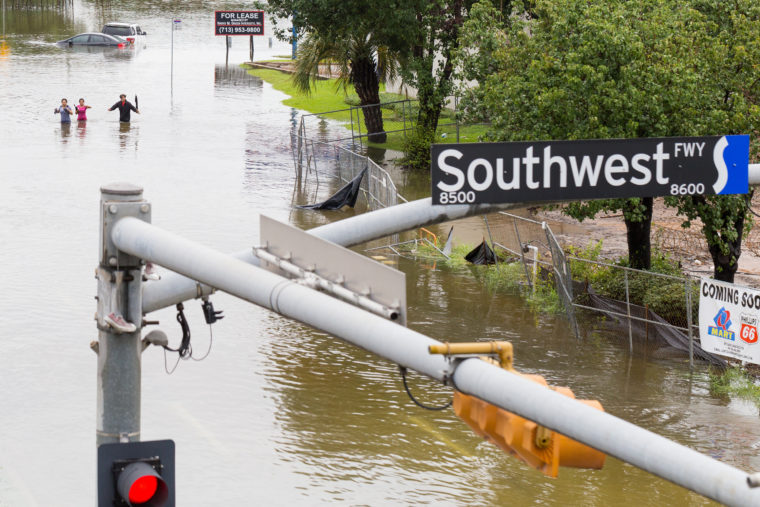The first blow landed Aug. 25, when Hurricane Harvey hit the Texas coast. More than 50 inches of rain — a National Weather Service North American record — flooded Houston and caused destruction on a scale the United States hasn’t seen since Hurricane Katrina.
The second blow landed Sept. 5, when President Trump ordered an end to DACA. The Obama-era Deferred Action for Childhood Arrivals program shielded approximately 800,000 young adults who had been brought to the United States as children, including 124,000 in Texas, from deportation.

“The timing of this disaster, coupled with the Trump Administration rolling back DACA and the Texas legislature’s attacks on ‘sanctuary cities,’ is truly a toxic cocktail,” said Derek Hoeferlin, associate professor of architecture at Washington University in St. Louis and an expert on water management issues.
In the wake of Katrina, Hoeferlin spent years working on water planning projects along the lower Mississippi River, including: the “Unified New Orleans Plan,” the only formally adopted post-Katrina recovery plan; “Gutter to Gulf,” a collaboration between the University of Toronto and Washington University’s Sam Fox School of Design & Visual Arts; “The Greater New Orleans Urban Water Plan,” with Waggonner & Ball Architects and Dutch colleagues; and Studio MISI-ZIIBI, one of three winning teams in the international competition “Changing Course,” which explored restoration strategies for the Louisiana delta.
Hoeferlin said that repealing DACA will deprive Houston of a substantial workforce at the very moment the city needs it most.
“After Katrina, many of the people who came to rebuild New Orleans were undocumented immigrants, and many were probably from Houston,” Hoeferlin said. “It’s a safe bet that many of those workers were parents of the very children that DACA sought to protect. These people are now terrified. The timing is terrible.
“If there’s one thing I learned from Katrina, it’s that recovery and rebuilding require patience,” Hoeferlin said. “Climate change, bad planning, no-zoning practices, flat topography, outmoded storm rating systems — these all played a role, and must all be part of the conversation about what’s to come in the future. But right now, what’s most important is assisting those in immediate dire need.
“Every person affected by disaster deserves assistance,” Hoeferlin said. “In this time of need, all of us — including the state of Texas, the Trump Administration and now Congress — must rise up to support the disenfranchised.”
